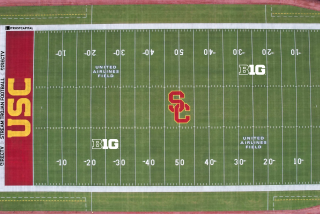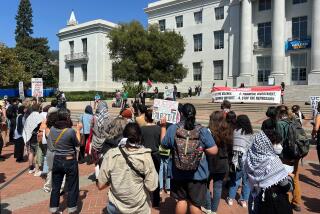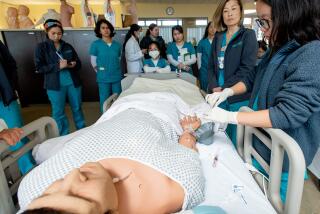Firms to Donate High-Tech Communications to CSUSM
Cal State San Marcos students may not have to leave their dorm rooms to turn in a class assignment or deliver an excuse to their professor.
Under an agreement signed Monday, two telecommunications giants will donate $1 million in equipment and expertise to the fledgling university over the next three years.
Pacific Bell and the Nashville, Tenn.-based Northern Telecom will provide the new university with state-of-the-art telecommunications equipment, including two-way interactive video stations, that will let professors see and talk with students in several classrooms at once.
The university, which had long planned to install a telecommunications network, pitched its proposal for free technology and goods as a chance for companies to showcase their wares.
“We said to them, ‘We don’t want you to tell us how much you are going to charge us, we want to know how much you are going to give us for the opportunity,’ ” university President Bill Stacy commented at a signing ceremony held at the university’s yet-to-be-completed campus.
Under the agreement, the university would act as a hub for an information network linking local community colleges, schools, libraries and, possibly, businesses, said Patricia Farris, the university’s director of business services.
In exchange for the know-how and equipment, the two firms will use the university as a testing ground to investigate practical uses for equipment in an institution unencumbered by old, existing technology.
“This is a unique opportunity to apply something from the ground floor and learn from it. You can find out how good it is, and then try to sell it,” said Gordon Townsend, technical manager for Pacific Bell.
Cal State San Marcos would become a marketing tool for the two firms as a showcase for applications of their equipment and services as they battle for the estimated $15 billion spent annually on technology by schools at all levels in the United States.
Exactly how the technology will be applied at San Marcos will be decided in a 10-year plan to be developed by the university and the two firms.
However, among the uses already being discussed by university officials and faculty members is giving students computer access to libraries, their professors and other students at the same campus or at outside universities.
Representatives of both firms concede that little of the technology to be installed under the agreement cannot be found elsewhere, such as voice mail and touch-tone class registration.
But what’s different here is that the firms and the university are bringing together components and infrastructure with the ability to keep up with new technologies.
“This is the first time that we have had a chance to come in before the concrete has been poured. Telecommunications has always been an afterthought. In this case, it’s part of the basic construction of the campus,” Townsend said.
More to Read
Sign up for Essential California
The most important California stories and recommendations in your inbox every morning.
You may occasionally receive promotional content from the Los Angeles Times.









